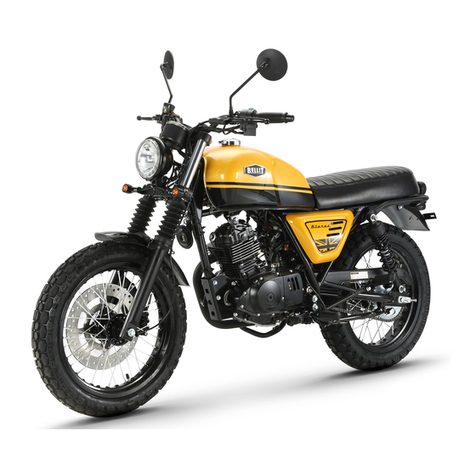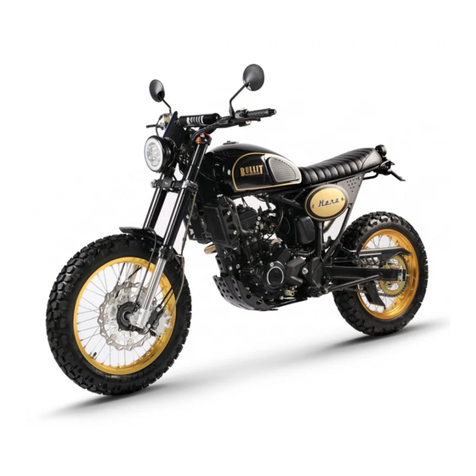
- 3 -
Chapter 1 User Instructions
Instructions on safe driving of motorcycle
There should be a condition for the motorcycle to serve your well. The
condition is paying attention to safety at any time. Therefore, you must
observe the traffic laws and follow the six points below.
Wear safety helmet
Safe driving starts from wearing a safety helmet. This is an important
factor in motorcycle driving. A high-quality safety helmet is the first thing of
personal protection in motorcycle driving. The most serious traffic accident is
head injury. Therefore, be sure to wear a safety helmet to drive a motorcycle,
and wear a pair of proper protective glasses.
Please be familiar with the vehicle structure
Your driving technique and your understanding of mechanical knowledge
are the basis of safe driving. Make exercises in a spacious place without other
vehicle and make yourself fully familiar with your motorcycle and control
method. Be sure to keep in mind that, skill comes from practice.
Understand the limit of your safe speed
Driving speed depends on road surface conditions, your skills and the
weather. Understanding the limit may prevent accident. At any time, accident
may be prevented as long as driving in the range of your skill.
Wear well-fitting dress
Loose and fancy dress may make you uncomfortable and unsafe in your
driving. Riding on the cradle, a well-fitting dress may give you freedom for
activities of your arms and legs. Gloves, boots and safety helmet will show
that you are qualified driver. High quality and tight dress shall be your
selection.
Pay more attention to safety during driving in rainy weather
Please note that, in rainy days, the braking distance is two times as much
as that in fine weather. Get away from any manhole cover, paint mark or oil
stain surface to prevent slipping, wet roads are dangerous. Avoid abrupt
steering during acceleration. Be careful when drive over railways and bridges
and keep a safe distance with any vehicle in front.
Inspection before driving
Please carefully read all instructions in "inspection before driving" of the
manual to guarantee the safety of you and passengers.





























